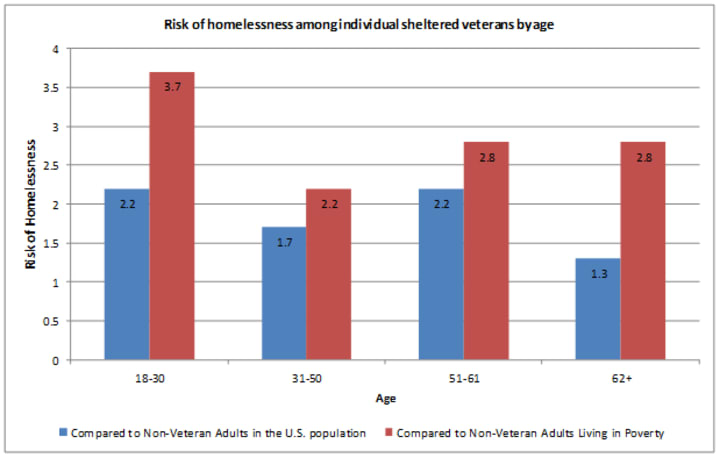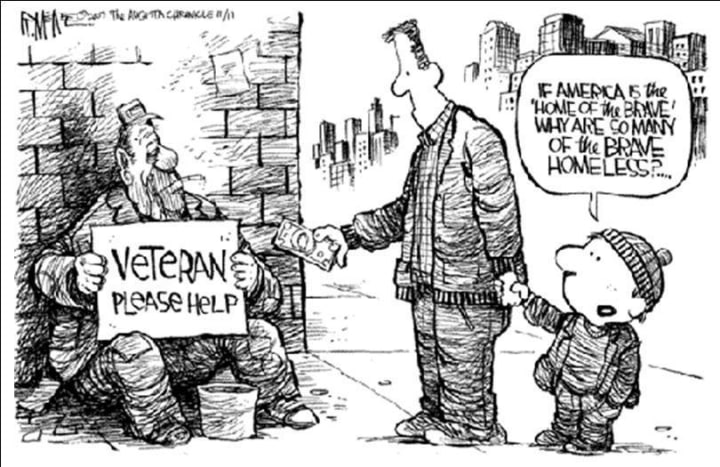
We all celebrate the Fourth of July, Veteran's Day, even Memorial Day. We like to say thank you to a gentleman or woman we see on the street displaying veteran status, or to express our appreciation to the veterans that we know personally. But many do not realize the staggering number of veterans who are homeless, or who are struggling with mental illness, substance abuse, or chronic unemployment. These men and women were willing to sacrifice their lives so that we could continue to enjoy the freedom to tweet about hating Donald Trump, or simply vote in an open election. Little do we know what often happens to them if they are fortunate enough to return home.
The rate of homelessness is staggering and unacceptable.

The risk of homelessness is 1.3 - 3.7 % greater for veterans compared to the general population of US citizens.
According to research done by the Department of Veteran's Affairs, the gap is the greatest for veterans in the 51–61 year age group, where they make up 23.5 percent of the homeless population compared to 14.5 percent of the general population, and in the 18– 30 year age group, they are 4.1 percent of the homeless population compared to 2.2 percent of the general US population.
Further research shows that over half of these veterans are disabled, and about the same percentage abuse as least one substance. Current research widely acknowledges the abuse of substances as a coping strategy, commonly referred to as "self-medicating." In fact, one research study found that approximately 80 percent of individuals in substance abuse treatment had experienced at least one trauma, although only 20 percent of those individuals had a PTSD diagnosis. Therefore, it is not sufficient to use a PTSD diagnosis to target all individuals in need of trauma treatment.
Do not mistake this as a post bashing the VA for not taking care of our veterans. The VA has done a commendable job diminishing the number of homeless veterans. But what can be done to prevent them from becoming homeless from the start?
The leading cause of homelessness is mental and physical illness — which includes substance abuse (as we discussed earlier, a typical sign of unresolved trauma). Therefore, by more accurately screening veterans leaving the service for signs of mental illness and providing them with the treatment and services that they require, we should effectively diminish the homeless population. Seems too simple, right? That's because it is. There are many reasons that mental illness, disability, and risk for substance abuse slip through the cracks, and veterans are not provided the resources they require to be successful. But that is a post for another day.
For the moment, I hope I have given you enough to think about, and I pray that the next time you see a homeless veteran on the street, you think twice about the judgments we are all so quick to make.

About the Creator
Kira Marie
I am a senior in the undergraduate Social Work department at the University of Maryland in Baltimore County, MD. Currently, I intern at a homeless shelter for veterans, and hope to continue work with the veteran population after graduation.






Comments
There are no comments for this story
Be the first to respond and start the conversation.